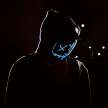
While four forces are already believed to rule the Earth, scientists at Fermilab near Chicago are beginning to believe there is another new force of nature.
They found further evidence that subatomic particles called muons do not behave in the way predicted by current theory of subatomic physics.
WHAT ARE MUONS?
Muons are subatomic particles that belong to the lepton family, which includes electrons and neutrinos. They are heavier than electrons and are negatively charged. Muons are unstable and have a relatively short lifetime, decaying into other particles, primarily electrons and neutrinos. They are produced naturally in cosmic ray interactions with Earth's atmosphere and are also created in particle accelerators. Muons have played a significant role in particle physics experiments.Scientists believe that an unknown force may be acting on muons.
More data is needed to confirm this conclusion of scientists. But if they were found, it would mark the beginning of a revolution in physics.
All the forces we face every day can be divided into four categories. Gravity, Electromagnetism, Strong and Weak Force. These four fundamental forces govern how all matter and particles in the universe interact with each other.
The beginning of a new revolution in physics?
The new discovery was made at Fermilab, a US government-owned laboratory. This new discovery is announced based on the results announced in 2021. In which the Fermilab team first suggested the possibility of a fifth force of nature.
Since then, the research team has collected more data, halved the uncertainty of their measurements, and revealed the facts, says Dr. Brendan Casey, senior scientist at Fermilab.
We are actively researching something new. "We are determining measurements with better precision than ever before," he says.
In an experiment with the catchy name 'g minus two (g-2)', researchers make subatomic particles called muons travel fast around a 15 meter diameter ring. There they spin around 1,000 times the speed of light.
But because of the dominance of a new force of nature, researchers have found that they can act in ways that cannot be explained by current theory, the so-called conventional method.
Although the evidence for this belief is strong, a team of Fermilab scientists say they have yet to find strong enough evidence.
But they believe that it can be achieved in the future. However, due to developments in theoretical physics, uncertainty has increased as to what the unusual behavior of muons should be.
CONFLICT BETWEEN PHYSICAL THEORY AND RESEARCH PRACTICE
Scientists believe that they will have the data they need to reach their goal and that the uncertainty in the physics theory will be sufficiently reduced within two years. A rival research team at Europe's Large Hadron Collider (LHC) is also trying to overtake this research.
Dr Mitesh Patel, from Imperial College London, is one of thousands of physicists at the LHC trying to find flaws in conventional procedures.
Measuring behavior that disagrees with conventional practical predictions is a key point of microphysics. It will stand the test of time for more than 50 years and will be the start of a revolution in our understanding."
Fermilab says the results will be the "ultimate clash" between theory and research practice that could lead to the discovery of new particles or forces.
WHAT DID THE RESEARCH FIND?
Everything in the vast universe around us is made of atoms. They are made up of very fine particles that are invisible to the eye. These interact to form the four forces of nature.
These particles generate electricity and magnetism (electromagnetism), two types of nuclear forces, and gravity.
Not only has their behavior always been the usual practice, but in fifty years of experiments they have performed perfectly without any change in their practice.
Muons orbit atoms just like electrons. However, they are 200 times larger than electrons.
But in this experiment, they were made to behave in an unusual way using powerful conductors.
The research found that muons showed very fast irregular activity, going beyond the usual practice.
Professor Graziano Venanzoni from the University of Liverpool, one of the team's lead researchers, said such an unusual phenomenon could be caused by a new, as yet undiscovered force.
"We believe there may be another force that we don't know about yet. It's different. We call it the 'fifth force,'" he said.
In short, this experiment has given physicists a definite step forward, the start of a revolution.






Comments
There are no comments for this story
Be the first to respond and start the conversation.